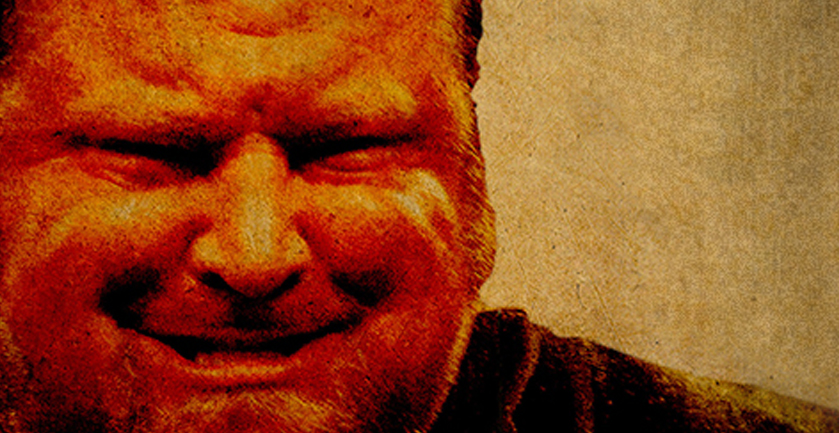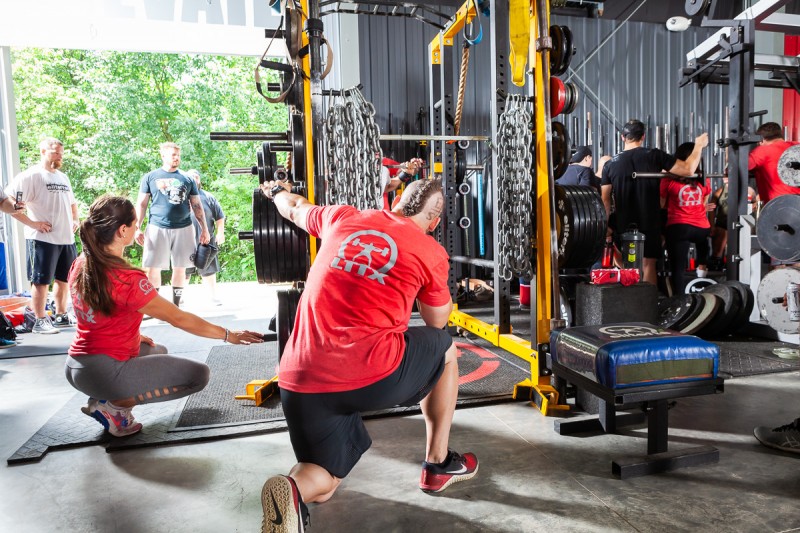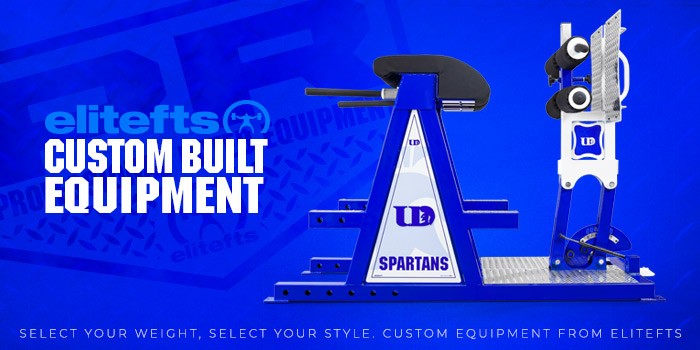
In this edition of my column, I continue on with five questions I was asked by a new strength and conditioning intern. I will be covering question three, which I think may be my favorite of all of the questions. It is one I have had many discussions about with many athletic coaches, and I definitely have some strong feelings about it. So, onto question three.
Are the Olympic lifts and their variations necessary for the athlete to be explosive and to perform at a high level?
No, they are not necessary for an athlete to be explosive and to perform at the highest levels. I don’t know exactly where this concept came from—that they are essential to athletes’ being explosive and strong. I do know that this concept has grabbed on tight and locked into the heads of coaches for decades. In fact, it is so stuck in many coaches’ heads that it is unlikely they will ever change their opinions on this concept. More times than I can count, I have been told, “Because we have always done them!” when I ask if they can explain why they have their athletes do the Olympic lifts. Some coaches or strength coaches have said that the “studies” show that they work and that the coaches themselves have always seen results from them, so they keep doing them. I can understand this argument, but I always ask if they have tried other options to see if they are better. To which the answer is usually, “No, we’ve been doing it for a long time and it works!” BTW, I am not big into all of the “studies” because I find that the majority of them still leave so many questions unanswered, and I find very few of them to be definitive due to the presence of small research groups, the lack of controls, the fact that the studies are too short, the presence of too many questions as to why the results worked, etc. I know I am going against conventional wisdom in this area, but keep in mind that I have been an athlete doing these lifts for sports and that I do train other athletes. It is through years of experience and the knowledge I have gained from many of the strongest people and coaches that I think this way. The Oly lifts do not have to be part of an athlete’s training program for him or her to be explosive and to perform at the top levels.
RECENT: Teaching the Squat, Bench, and Deadlift to Athletes
Before all of the coaches and Oly lift lovers get too pissed off, let me get this out of the way right now. I am not against the Oly lifts at all; in fact, I have great respect for the sport. I will even go as far as to say that I believe they CAN be an important part of an athlete’s weight training program. The Oly lifts are very complex and take athleticism to perform. They can be great for developing explosive strength. They can be great at developing muscle control and timing. Any Oly lifter who makes it to the highest levels proves these points. Olympic weightlifting is a very complex sport that takes years and years to master, though. Performing a snatch or a clean and jerk correctly is a very difficult thing, and even more so with maximal weights. These movements take flexibility, mobility, strength, and coordination on an epic level. This, again, is why they can be beneficial but also why they might not be the best choice. They are an Olympic sport all on their own for a reason. So, I am just saying I do not feel they are a necessary part of an athlete’s weight training program, and I think there are many better options given the restrictions placed on an athlete trying to perform in a sport other than Olympic weightlifting.
There are many, many ways to strength train an athlete, and to be honest, I have seen athletes succeed using all of them. The fact is, there is no be-all-end-all in the world of strength training. That being said, there are lots of coaches, trainers, and athletes with strong opinions about why they train the way they do. So, let me explain why I lean away from the Oly lifts. First off, I am not a highly ranked Oly lifter or a high-level Oly lifting coach. Yes, I have trained on the Oly lifts, and I have coached on the Oly lifts, but I admit that I am not an expert at them. So, even though I can help lifters with the Oly lifts, and although I know I can get them started in a good way with them, I would rather train on lifts I am a high-level athlete/coach in. I do wish to learn more about Oly lifting and would love to work with Oly lifters, but even then, I probably will not add it into my regular lifting for my strength training athletes. As I stated, the Oly lifts are very complex, with a technique that is very hard to master, even more so when dealing with maximal weights. This leads me to my next point—where I see many, many, many athletes performing the Oly lifts with horrible technique. Their coaches either do not understand how to coach the lifts or they simply do not have the time to teach the lifts correctly. We must face the reality that in the athletic world, and especially in the collegiate athlete world, strength training is only gonna get so much time. Being able to teach, correct, and continue to improve lifts as technical at the Oly lifts is challenging. The major problem with this is that performing these lifts incorrectly leaves so many joints, muscles, and areas of the body susceptible to injury. There can be huge stress put on the lower back, knees, ankles, wrists, and shoulders. As I stated in one of the previous questions, one of the main goals of trainers is to keep athletes away from injury. Again, I am not saying they are bad lifts or that athletes should not do them; I am saying that if I am weighing out every factor, I feel there are way better options.
So, let’s move onto what I think are better options. As I explained in question two, I think the main powerlifting movements are amazing and essential for athletes. I also feel they are much easier to teach and therefore get athletes performing with correct technique much quicker. This, in turn, makes them much safer movements with less of a chance of injury once the athletes perform them with correct technique. Time saved initially coaching a movement, and time to keep correcting a movement mean more time actually training for strength. This also opens the door to training on more of a conjugate style, constantly switching up main movements with a wide variety of exercises designed to strengthen the muscles used in the main lifts. Which as I said before are the most important muscles used in almost all sports. This is important not only because strength can be gained more quickly but because athletes do not always do the same movements while competing in their sports. They are constantly moving and putting their bodies in different positions and situations under different forces. Conjugate training helps them to learn to adapt to this and to be strong in many different planes and positions.
We still have the concept that the Oly lifts are the best way to make athletes explosive. I have also heard that the Oly lifts teach them to coordinate their whole bodies explosively. I very much disagree with these ideals, at least with the concept that they are the best lifts for doing this. If you break down the Oly lifts, they have a short period of exploding upward, followed by a period of deceleration so that they can then pull themselves under the bar to catch it. In the clean and jerk, they pull hard off the floor, then pull themselves under the bar. They then squat up, only to decelerate again at the top, followed by a clean, which is again dropped under the bar. The snatch, once caught, is again a squat that has to be decelerated. Now there are definitely elements of these lifts that I think are amazing, but there are also parts that I argue are not so helpful for the athlete. How often do athletes decelerate at all? Usually, only once a movement is finished, such as a throw, where the ball is already on its path. Once they have already hit another player, who is now falling to the ground. I say let’s cut to the chase and trim the fat. You really want to train an athlete to be explosive? Try using dynamic methods with accommodating resistance, where they do not have to decelerate at all but instead move as explosively as possible through the whole movement.
For some reason, lifters and coaches still believe that the squat, bench, and deadlift work only specific muscle groups. If performed incorrectly, this is probably true, but when performed correctly, each one of these lifts works almost every muscle in the human body. Anyone who trains under me will vouch for that after experiencing how he or she feels the next two days after training on these lifts correctly. These lifts teach the body how to move as a unit. They teach the body when and where to stay tight and braced. When to explode and what muscles should fire in what order. They teach the body to build internal pressure while also teaching how to control the intensity of this pressure. They teach the body the best and strongest position to be in. They teach the body to actually work as a whole unit because every muscle and nerve are connected for a reason. I believe that the three main powerlifts actually simulate way more sport movements than the main weightlifting movements do. I have continued for many years to see how training on the three main lifts correctly develops habits that transfer onto the field of sports and increase explosive performance.
Again, I am not against the Olympic lifts, and I do think that under the right situations, they can be a beneficial part of an athlete’s strength training program. In my opinion, though, I feel there are way better options we can use to achieve even better results. The Olympic lifts are very complex and take such a level of skill that they take a lot of time to learn correctly. Once learned, it takes time to continue to stay up on that skill. They also take a qualified coach that has put his or her time into really learning these lifts. Due to the complexity of these lifts, the risk of injury also increases tremendously when they are performed with poor technique, which I see way too often. Most athletes are limited in the time they can give to strength training. Their sport is not actually lifting as with powerlifters. With time being so precious, I think we really need to be as efficient as possible in the gym. I believe that the best option that gives the best results in the least amount of time is a conjugate method using dynamic training with accommodating resistance. This, of course, includes the main powerlifting movements and other movements based off of these. The key to all of this is understanding and performing the lifts with correct technique. This will also keep the risk of injury to a minimum in the gym and on the field. The Olympic lifts are great movements and are very impressive, but for the athlete, I do not feel they are necessary to building explosive strength or to perform on the highest level at all.











